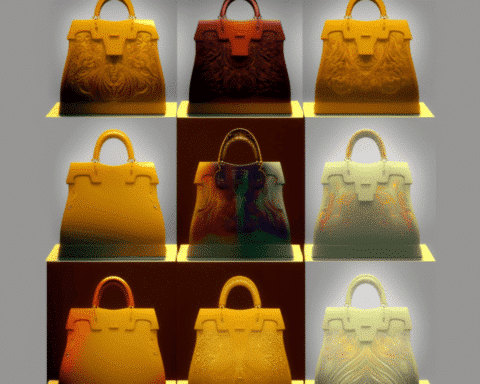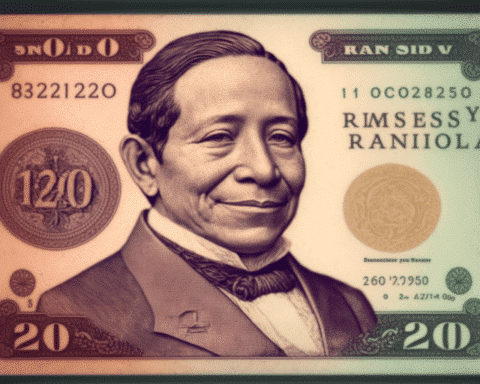Simon de Pury, the auctioneer, examines his crystal gavel closely.
Guarantees
The timing of major single-owner collections or trophy works coming to the art market is not necessarily closely tied to the general economic climate or the art market’s perceived health.
Instead, it often has more to do with coincidence resulting from the occurrence of one of the three D’s – death, debt, or divorce.
In other words, the appearance of such collections or works on the market is often the result of the passing of an owner, the financial troubles of an owner, or the dissolution of a marriage rather than a deliberate decision to sell based on market conditions.
Despite this, it is important to note that in 2023, it will continue to be possible to generate solid guarantees for truly exceptional material.
This is because there will always be buyers who are willing to pay top dollar for exceptional pieces, regardless of the broader market conditions.
As such, the market will remain strong for sellers of truly rare and valuable works, and buyers will be eager to secure guarantees for them.
Wet Painting
The rush for red-hot emerging artists, whose prices can skyrocket from £10,000 to £1m+ in a matter of months, is likely to cool down.
This is because many buyers will come to realize that it can be a highly competitive and, in some cases, high-risk market.
The last one in a rapidly increasing chain of buyers can easily be left holding a piece that has lost much of its value.
However, despite this trend in the market for emerging artists, the under-appreciation and representation of female artists in art history will continue to be addressed and revised upwards.
As more attention is drawn to female artists’ work and their contributions to the art world, the market will begin to recognize their value.
It’s important to note that the art market has a history of experiencing waves where many artists from a certain genre or style gain popularity, but eventually, only the very best will remain.
This is because the market will continue to value truly exceptional and unique works rather than those that are riding a momentary trend.
As such, while some emerging artists may see a temporary surge in popularity, only the truly exceptional and talented ones will stand the test of time and maintain their value in the long term.
NFTs
While the initial gold rush and fever that surrounded NFTs, digital art, and the use of blockchain in the art market has clearly cooled down, it’s important to note that these technologies and trends are here to stay.
They have created new opportunities and possibilities in the art market, and the impact they will have in the long term is yet to be seen.
The use of NFTs, for example, has allowed for the creation of unique digital artworks that can be verified and authenticated on the blockchain, giving them a level of scarcity and value that was not possible before.
This has opened up new possibilities for artists and collectors alike.
Additionally, the use of blockchain in the art market has allowed for greater transparency and traceability, making it easier to verify the provenance of artworks and combat issues such as forgery.
In many ways, it’s only the real beginning now for NFTs, digital art, and blockchain in the art market, as was the case after the initial dot.com bubble burst 20 years ago.
Just as the internet and technology continued to shape and change business and society after the bubble burst, these technologies and trends will continue to shape and change the art market in the years to come.
It’s an exciting time to be a part of the art market as the industry is going through a massive change, and this change is here to stay.
Wild Card
A new trend in the primary art market that my company, de PURY, along with Sotheby’s and Hauser & Wirth, began in 2022 is likely to spread in the coming year.
This trend involves commercial galleries using auctions to sell some of the most sought-after artists they represent on the primary market.
It is expected that other top commercial galleries will also adopt this approach in order to tap into the potential of this new sales channel.
The use of auctions for primary market sales is a concept that has been introduced previously, but it has not been widely adopted by commercial galleries in the past.
However, with the rise of online platforms, organizing and participating in auctions has become increasingly easy, making it a more accessible option for galleries.
Additionally, auctions can provide a sense of excitement and competition that can drive up prices and attract more buyers.
Another trend likely to be seen with this new approach is incorporating a charitable element.
With the increase in transparency and accountability in the art market, it’s becoming more common for galleries and auction houses to have a charitable component to their activities.
This can help build a positive reputation and give back to the community.
This trend of primary market auctions that have been started in 2022 by companies like de PURY, Sotheby’s and Hauser & Wirth is likely to spread as more commercial galleries start to use the auction method to sell some of the most in-demand artists that they represent on the primary market, and charitable element will be linked to most of these auction activities.
The art market is constantly evolving, and the trends and predictions for 2023 indicate that the market will continue to change and adapt in response to new technologies and market conditions.
The rush for emerging artists may cool down, but the under-appreciation and representation of female artists in art history will continue to be addressed.
NFTs, digital art and the use of blockchain in the art market will be here to stay and will continue to shape and change the art market in the years to come.
Commercial galleries’ use of primary market auctions will continue to spread and be linked with charitable elements.
As the market evolves, it is important to stay informed and adapt to the changes in order to make informed decisions as a collector, dealer, or artist.




